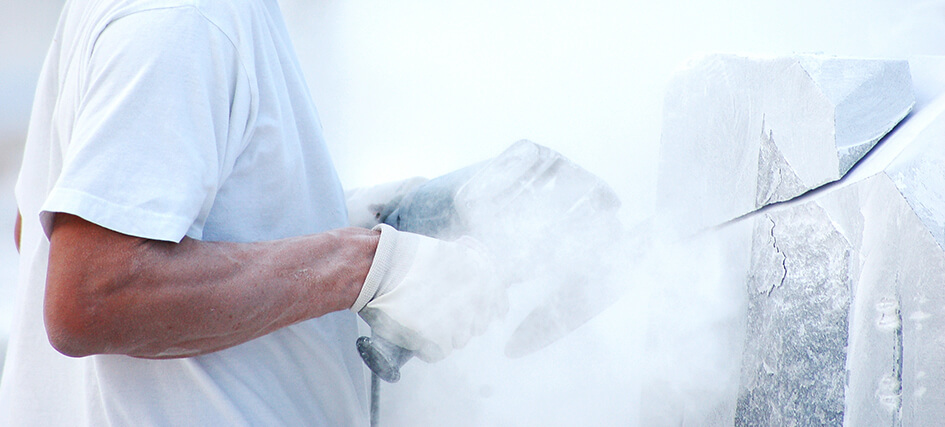Blog
The Dangers of Artificial Stones: Risks to Health and Environment
One of the biggest debates that we have in today’s world is: natural stones or artificial stones, which one is better? Even though natural stones may be more costly, the dangers of artificial stones can not be ignored.
 In this article, we will discuss the different types of artificial stones used for construction, the problems faced by factory workers due to the production process, the health issues that the process can cause, and the ban on artificial marbles by multiple countries because of their hazardous production processes.
Artificial stones, also known as engineered stones are made by combining natural minerals, such as quartz, granite, and marble, with resins and pigments. They have become increasingly popular in construction due to their durability, low maintenance requirements, and aesthetic appeal. However, the production process of artificial stones can pose significant risks to the health of factory workers and the environment.
In this article, we will discuss the different types of artificial stones used for construction, the problems faced by factory workers due to the production process, the health issues that the process can cause, and the ban on artificial marbles by multiple countries because of their hazardous production processes.
Artificial stones, also known as engineered stones are made by combining natural minerals, such as quartz, granite, and marble, with resins and pigments. They have become increasingly popular in construction due to their durability, low maintenance requirements, and aesthetic appeal. However, the production process of artificial stones can pose significant risks to the health of factory workers and the environment.

Types of Artificial Stones Used for Construction
There are several types of artificial stones used for construction, including quartz, granite, and marble.1. Artificial Quartz
It is the most popular type of artificial stone due to its strength and durability. It is made by combining quartz crystals with resins and pigments. This results in a material that is highly resistant to scratches, stains, and heat. Quartz is also available in a variety of colours and patterns, making it a versatile option for a range of applications. The Dangers of Artificial Stones.2. Artificial Granite
Granite artificial stones are also commonly used in construction, and they are made by combining crushed granite with resins and pigments. This results in a material that is highly durable, scratch-resistant, and easy to maintain. Granite artificial stones are also available in a range of colours and patterns, making them suitable for a variety of applications.3. Artificial Marble
Marble artificial stones, commonly known as cultured marble, on the other hand, are made by combining marble dust with resins and pigments. This results in a material that looks and feels like natural marble but is more durable and easier to maintain. Now that we know the types of artificial stones available in the market, let’s get into the problems faced by factory workers due to their extensive production process. The Dangers of Artificial Stones.- The production process of artificial stones involves cutting, grinding, and polishing the stones, which generates a significant amount of dust. This dust contains particles of silica, a mineral that can cause serious health problems when inhaled. Factory workers who work in the production of artificial stones are at a high risk of exposure to silica dust, which can cause silicosis, a lung disease that can lead to permanent lung damage and even death.
- Prolonged exposure to silica dust can cause other respiratory illnesses, such as lung cancer and chronic obstructive pulmonary disease (COPD). The use of protective equipment, such as masks and gloves, is essential to reduce the risk of exposure to silica dust. However, these measures may not be enough to protect workers from the hazardous dust, and they may not be used properly due to inadequate training and supervision.
- Silica dust is a hazardous material that can cause serious health problems when inhaled. The dust can enter the lungs and cause inflammation, scarring, and permanent lung damage. According to the World Health Organization (WHO), around 2.3 million people globally die each year due to respiratory diseases caused by exposure to silica dust.
- The production process of artificial stones also poses significant risks to the environment. The process generates a significant amount of waste, including dust, slurry, and water. The waste contains high levels of silica and other hazardous materials, which can contaminate the soil and water sources. This can have a severe impact on the environment and public health.



